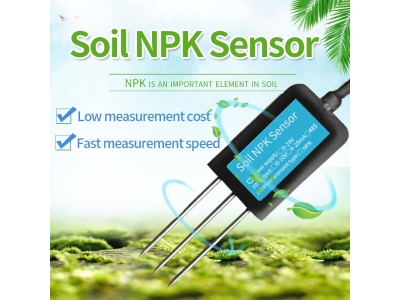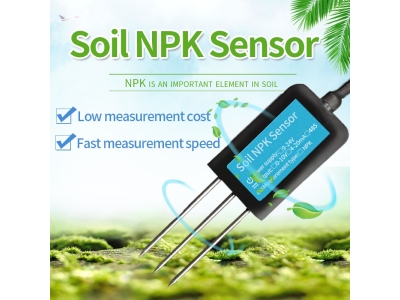The agricultural industry is undergoing a revolutionary transformation with the advent of smart soil sensors. These innovative devices provide farmers with real-time data on soil conditions, enabling them to make informed decisions about irrigation, nutrient management, and overall crop health. This article explores the significance of smart soil sensors in empowering farmers and revolutionizing agriculture.
Real-time Data Collection:
Smart soil sensors offer real-time data collection capabilities, providing farmers with up-to-date information on crucial soil parameters such as moisture levels, temperature, pH, and nutrient content. Unlike traditional soil sampling methods that require time-consuming laboratory analysis, smart soil sensors deliver immediate results, allowing farmers to quickly assess soil conditions and respond accordingly.
Precision Irrigation:
Water management is a key challenge in modern agriculture. Smart soil sensors play a pivotal role in precision irrigation by accurately measuring soil moisture levels. With access to real-time data, farmers can optimize irrigation schedules, ensuring that crops receive the right amount of water at the right time. This not only conserves water but also minimizes the risk of overwatering or drought stress, leading to improved crop yields and water use efficiency.

Nutrient Management:
Proper nutrient management is essential for maximizing crop productivity while minimizing environmental impact. Smart soil sensors provide farmers with accurate information on nutrient levels in the soil, including nitrogen, phosphorus, potassium, and micronutrients. With this data, farmers can fine-tune fertilizer applications, reducing the risk of nutrient imbalances, leaching, and runoff. By optimizing nutrient management practices, farmers can improve crop quality, reduce input costs, and protect water resources.
Predictive Disease Management:
Disease outbreaks can have devastating effects on crop production. Smart soil sensors equipped with disease detection capabilities, such as DNA probes or pathogen sensors, can detect the presence of harmful pathogens in the soil. By monitoring these indicators, farmers can implement proactive disease management strategies, such as targeted treatments or crop rotation, to prevent the spread of diseases and minimize crop losses.
Climate Adaptation:
Climate change poses significant challenges to the agricultural sector, including temperature fluctuations, unpredictable rainfall patterns, and increased frequency of extreme weather events. Smart soil sensors enable farmers to monitor and adapt to these changing conditions. For example, temperature sensors can help identify potential frost risks, allowing farmers to take protective measures. Additionally, rainfall sensors provide insights into soil moisture replenishment, assisting farmers in adjusting irrigation schedules accordingly.
Data-driven Decision-making:
Smart soil sensors generate vast amounts of data, which can be further analyzed using advanced algorithms and data analytics tools. This data-driven approach empowers farmers to make informed decisions based on scientific evidence rather than intuition alone. By leveraging data, farmers can optimize resource allocation, plan for future seasons, and continuously improve their farming practices.
Remote Monitoring and Automation:
Smart soil sensors often come equipped with wireless connectivity options, allowing farmers to remotely access data from their smartphones or computers. This remote monitoring capability enables farmers to keep track of soil conditions without needing to be physically present in the field. Furthermore, some smart sensors integrate with automated irrigation systems, adjusting water delivery based on real-time data, thus saving time and labor.
Cost-effectiveness:
While smart soil sensors represent an initial investment, they offer long-term cost benefits. By providing precise data on soil conditions, these sensors help farmers optimize inputs such as water, fertilizers, and pesticides, reducing waste and improving resource efficiency. Additionally, by preventing crop losses due to improper irrigation or nutrient management, smart soil sensors contribute to overall cost savings and increased profitability for farmers.
Adoption Challenges and Future Outlook:
Despite the numerous benefits, the adoption of smart soil sensors still faces certain challenges. These include the initial investment costs, technical knowledge required for data interpretation, and connectivity issues in rural areas. However, as technology continues to advance and costs decrease, the future outlook for smart soil sensors is promising. Increased adoption will lead to a more data-driven, sustainable, and efficient agricultural industry.
Conclusion:
Smart soil sensors are revolutionizing agriculture by providing farmers with real-time data on soil conditions. By harnessing the power of these devices, farmers can make informed






